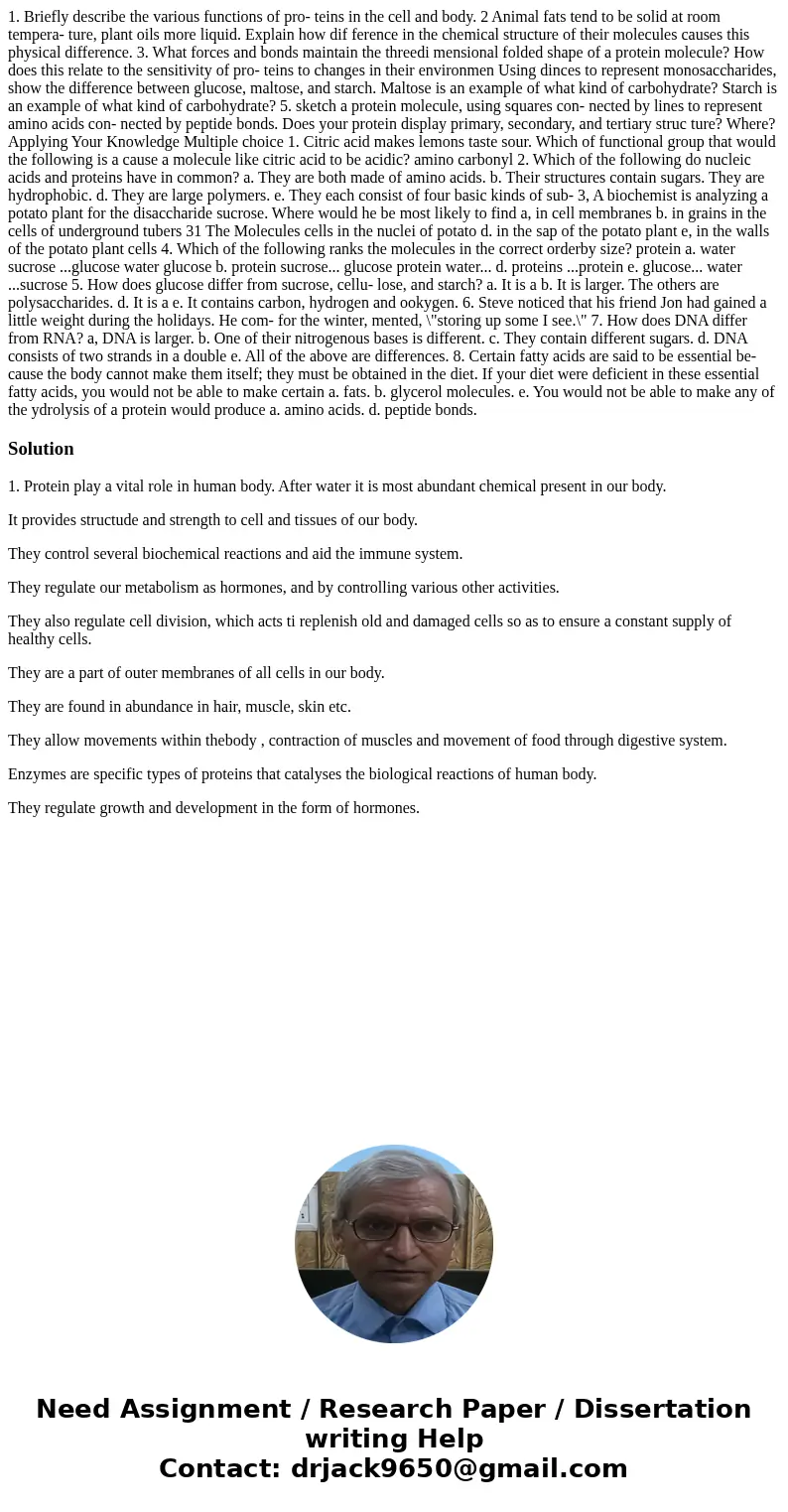1. Briefly describe the various functions of pro- teins in the cell and body. 2 Animal fats tend to be solid at room tempera- ture, plant oils more liquid. Explain how dif ference in the chemical structure of their molecules causes this physical difference. 3. What forces and bonds maintain the threedi mensional folded shape of a protein molecule? How does this relate to the sensitivity of pro- teins to changes in their environmen Using dinces to represent monosaccharides, show the difference between glucose, maltose, and starch. Maltose is an example of what kind of carbohydrate? Starch is an example of what kind of carbohydrate? 5. sketch a protein molecule, using squares con- nected by lines to represent amino acids con- nected by peptide bonds. Does your protein display primary, secondary, and tertiary struc ture? Where? Applying Your Knowledge Multiple choice 1. Citric acid makes lemons taste sour. Which of functional group that would the following is a cause a molecule like citric acid to be acidic? amino carbonyl 2. Which of the following do nucleic acids and proteins have in common? a. They are both made of amino acids. b. Their structures contain sugars. They are hydrophobic. d. They are large polymers. e. They each consist of four basic kinds of sub- 3, A biochemist is analyzing a potato plant for the disaccharide sucrose. Where would he be most likely to find a, in cell membranes b. in grains in the cells of underground tubers 31 The Molecules cells in the nuclei of potato d. in the sap of the potato plant e, in the walls of the potato plant cells 4. Which of the following ranks the molecules in the correct orderby size? protein a. water sucrose ...glucose water glucose b. protein sucrose... glucose protein water... d. proteins ...protein e. glucose... water ...sucrose 5. How does glucose differ from sucrose, cellu- lose, and starch? a. It is a b. It is larger. The others are polysaccharides. d. It is a e. It contains carbon, hydrogen and ookygen. 6. Steve noticed that his friend Jon had gained a little weight during the holidays. He com- for the winter, mented, \"storing up some I see.\" 7. How does DNA differ from RNA? a, DNA is larger. b. One of their nitrogenous bases is different. c. They contain different sugars. d. DNA consists of two strands in a double e. All of the above are differences. 8. Certain fatty acids are said to be essential be- cause the body cannot make them itself; they must be obtained in the diet. If your diet were deficient in these essential fatty acids, you would not be able to make certain a. fats. b. glycerol molecules. e. You would not be able to make any of the ydrolysis of a protein would produce a. amino acids. d. peptide bonds.
1. Protein play a vital role in human body. After water it is most abundant chemical present in our body.
It provides structude and strength to cell and tissues of our body.
They control several biochemical reactions and aid the immune system.
They regulate our metabolism as hormones, and by controlling various other activities.
They also regulate cell division, which acts ti replenish old and damaged cells so as to ensure a constant supply of healthy cells.
They are a part of outer membranes of all cells in our body.
They are found in abundance in hair, muscle, skin etc.
They allow movements within thebody , contraction of muscles and movement of food through digestive system.
Enzymes are specific types of proteins that catalyses the biological reactions of human body.
They regulate growth and development in the form of hormones.

 Homework Sourse
Homework Sourse